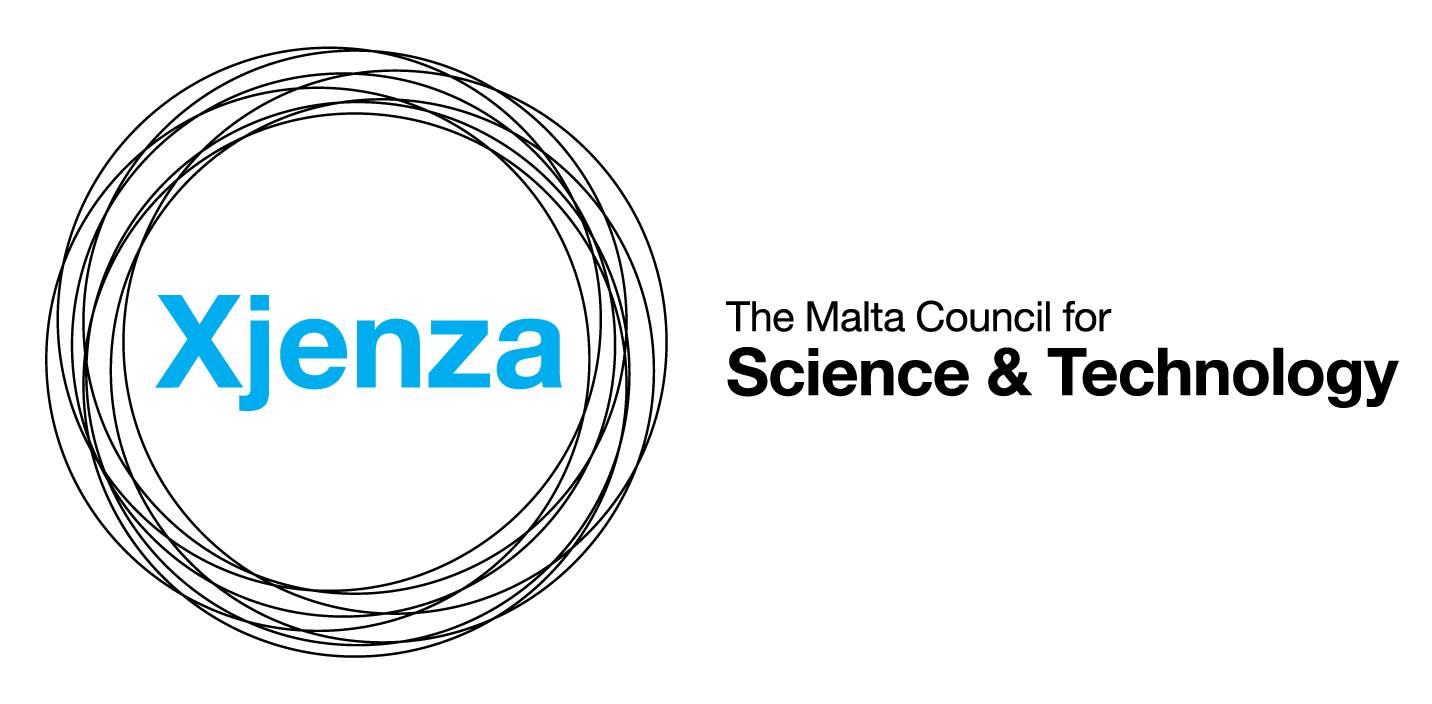ANGELS & DEMONS
25th August 2022
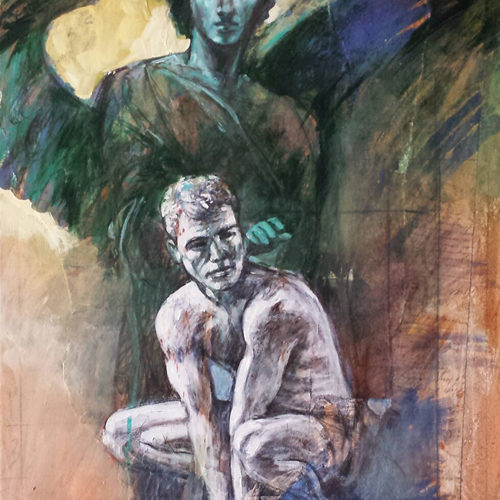
WHY DEMONS HAVE BEEN GIVEN THE THIN EDGE OF THE STICK
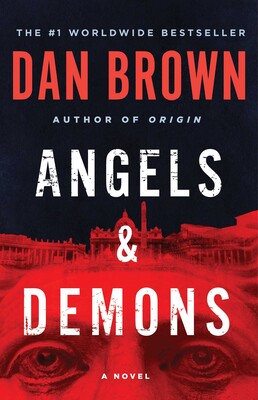
Cant really blame Dan Brown, a mediocre writer of popular fiction, for reinforcing the idea (perpetuated by western religions) that life is a battle between good (angels) and evil (demons). That demons are malevolent spirits/energies/forces. Even I bought into this construct. But after listening to Elizabeth Gilbert talking about sources of creativity (see link below), I’m having an epiphany moment. I’m embracing my demon. Those who know my life story might hear alarm bells, wondering if I could possibly get any more unhinged. Not unhinged dear friends, just lived a life of perpetual curiosity.
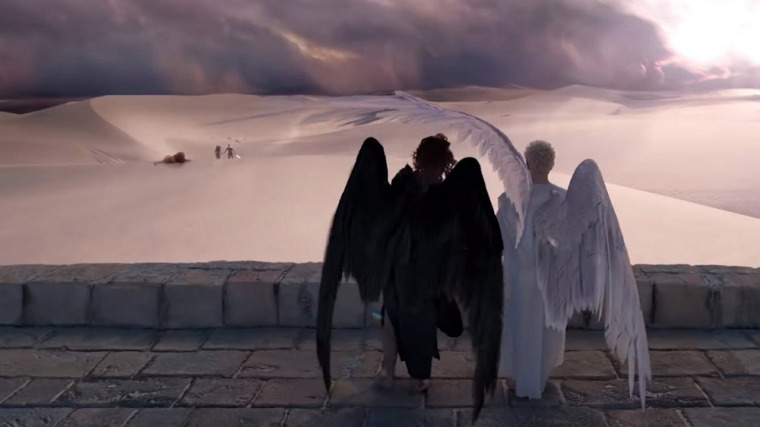
The source of words and concepts fascinates me. In Western culture, we accept Demon to mean something negative and malevolent. But its origins in Greek and Roman cultures meant something completely different. Socrates wrote of his Agathos Daimon, his benevolent spirit, guiding him in his search for truth. Plato said the word Daimon referred to a disembodied source of wisdom, something external to the self. A spiritual guide, a guardian and a wise adviser. Some today would call that an angel. But that sounds like what ancient cultures described as a daimon. So when did daimon become demon? When did the switch happen?
Here’s something to think about. Is the clue to the source of creativity – inspiration- hidden in the source of the word?
INSPIRATION has an unusual history in that its figurative sense appears to predate its literal one. It comes from Latin, inspiratus (the past participle of inspirare, “to breathe into“). Isn’t that a bit odd that nowadays when we use the word we don’t think for a moment we mean we are actually “breathing in” inspiration from an external source? Moments of inspiration are explained as the internalised workings of our own mind. Or, for artists in particular, its called our muse, a person or personified force which influences our endeavours. (In mythology, the Muses were nine goddesses who symbolized the arts and sciences.) But is it not possible that when feeling inspired we might actually be doing exactly what the Ancients acknowledged: we are breathing in- inhaling, imbibing -a disembodied source of wisdom and enlightenment? In other words, our daimon?
Here’s another word we associate with creativity: genius. But where does the word originate from? Daimon. So your individual source of innovative creativity is your demon? Blimey, there’s an interesting example of lost in translation.
Up until the 15th century only poets and philosophers were regarded as being gifted with genius. Then, by the 16th century, artists were included in that category when Italian painter and architect Giorgio Vasari attributed his contemporaries’ talents to similar divine interventions. (Check the etymology of the word TALENT…yep again its Daimon). Attributing genius to the work of spirits or divine inspiration was the norm until the mid-1700s. From then on, exceptionally gifted creatives were considered geniuses in their own right. It had become unscientific and archaic, mumbo-jumbo stuff, to attribute creative inspiration to a supernatural guiding force.
I’ve played with the theme of angels and demons in a series of paintings, like this one.
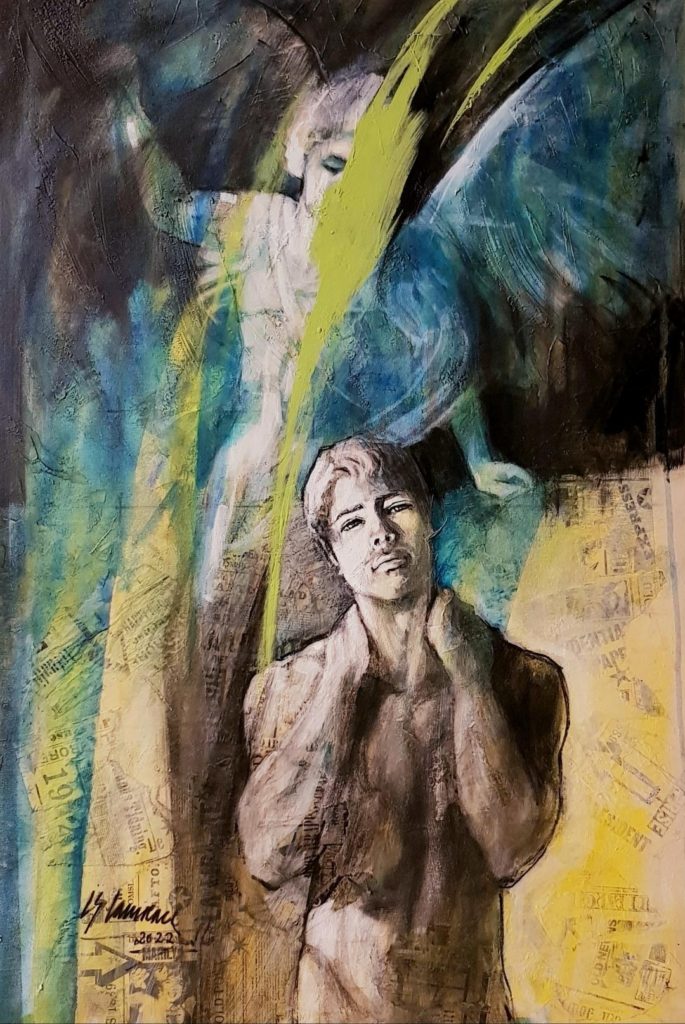
The angel represents my struggle (during my youth) to come to terms with the dictates of social norms, social acceptance, not being a moral aberration, a sexual identity struggle which today is generally obsolete, but in the 70s it was a major hurdle. While attending St.Martin’s School of Art in London, I felt like the only gay in the village. It was the loneliest time of my life.

While listening to Elizabeth Gilbert’s inspirational talk (see link below) where she revisits ancient mythology as a possible explanation for sources of creativity, I suddenly thought, hang on, I’ve heard the mention of daimons in another context. His Dark Materials. The TV series based on Philip Pullman’s books.
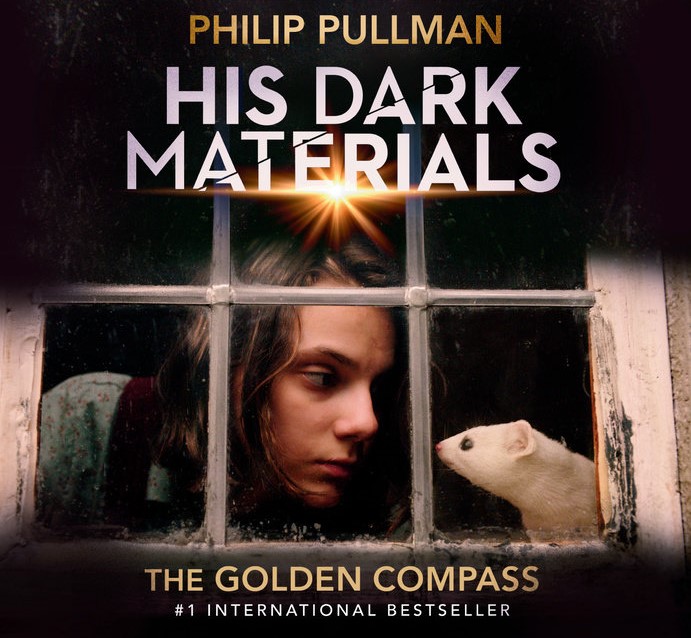
Each character has their own external guide, a manifestation of their inner self, their own DAEMON, which takes the form of an animal. Pullman attributes the concept of Daemons to the daimons of ancient mythology. When asked in an interview (The Guardian 2002) what inspired him to incorporate this concept into his stories, he said “Daemons just came to me, I’m afraid — I can’t be more specific than that.” That mysterious bolt out of the blue. Was he being inspired by his own daimon?
In my next post I’ll be exploring what might explain those “it just came to me” moments of inspiration and flashes of creativity.
Elizabeth Gilbert: TED Talks click to view: Your Elusive creative Genius Sources
Philip Pullman interview in The Guardian 2002
Interesting reading: Brittanica: Angels and Demons

